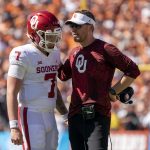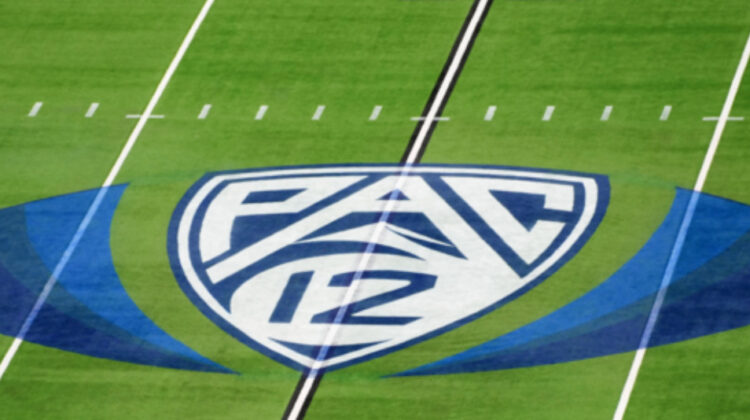We gained a few crumbs of clarity this week on the state of Pac-12 media rights negotiations. Here’s a recap, in five parts …
1. The Ides of March await
Nothing generates rumor, innuendo and leaks from anonymous sources quite like conference realignment. The Pac-12 has done a remarkable job keeping quiet for the past eight months as it negotiates a media rights contract and considers expansion.
(You could argue the conference has been too quiet — that it should have pushed back publicly on erroneous reports.)
This week, two campus officials offered on-the-record comments that illuminate the state of play.
First, Washington State president Kirk Schulz told the Hotline that he expects the saga to end next month.
“My sense is we need to get it done in March — in mid-March, hopefully,” Schulz said. “The longer it goes, the more noise there will be.”
(We’ll get to the noise factor momentarily.)
Schulz indicated some schools “have a little trepidation” about the specifics of the deal but added: “I don’t feel at all like anyone is spiraling off into places of despair.”
In other words, he doesn’t sense any presidents are ready to bolt for another conference.
We generally agree but would offer an evergreen caveat: Until an agreement is reached and contracts signed, anything is possible in realignment.
2. The revenue reality
The next morsel came Thursday, when Arizona State athletic director Ray Anderson echoed Schulz’s projection for a conclusion and told the Phoenix-based Arizona Sports:
“We’re all anxious to have something resolved here in the next couple, three weeks, so we can take next steps and get some of this speculation out of the air in regard to what other conferences may be thinking in terms of trying to pick off Pac-10 teams, if you will, and what we may do in terms of adding institutions.”
Notably, Anderson hinted at the revenue piece, saying, “It may not be the projections originally contemplated but will be a solid enough financial situation to keep this conference together.”
How should that comment be interpreted by fans anxious for details and resolution?
We believe the conference initially hoped to secure a media rights deal that would spin off annual revenue that approached $40 million per school per year.
More likely, it will sign an agreement that generates approximately the same revenue Big 12 schools are set to receive ($31.7 million annually) from an agreement reached with Fox and ESPN in late October.
It could be a few million more per year or a few million less. Either way, the figure is unlikely to materially alter the competitive balance.
Neither the Pac-12, Big 12 or ACC will come close to the dollars flowing into the SEC and Big Ten through the rest of the decade.
3. The X Factor (or not)
Thanks to Schulz and Anderson, we have a sense of the timing and valuation, but there are two more pieces to the puzzle: The identity of the Pac-12’s media partners; and the decision on expansion.
Our sense is the conference is negotiating on multiple tracks at once, with ESPN, Amazon and Apple all involved.
And we suspect a fourth entity, or option, exists for the Pac-12 — one that has not been the object of media or fan speculation.
Only a small circle of conference executives, plus representatives from the media companies, are aware of the details.
4. Pondering the partners
There are three plausible scenarios:
— The Pac-12 agrees to an all-in distribution deal with a single media entity — the full sweep of football and basketball inventory can be found in one place.
Perhaps that’s Apple, which is expanding into live sports and could use the Pac-12 Networks’ infrastructure to produce the live events.
Perhaps it’s Amazon or Disney.
It’s difficult to envision an all-in scenario that doesn’t involve one of those three entities.
— The Pac-12 sells all its content to a single media outlet, which then signs a sub-licensing agreement with other companies.
Hypothetically, the conference could go all-in with Apple, which would then sublicense 15-20 games to ESPN for the 7:30 p.m. Pacific kickoff window.
— The Pac-12 splits its game inventory among multiple partners.
This is the most likely outcome, in our view, and it would mirror the current agreement in which ESPN and Fox share the rights.
The conference needs its best football games to be widely, and easily, accessible. Ideally, the inventory would be spread across three tiers of content delivery: broadcast television, cable and streaming.
Whether commissioner George Kliavkoff can craft an agreement of that nature remains to be seen.
5. The PR problem
Until Kliavkoff delivers, the “noise” that Schulz referenced will continue.
The Pac-12 generally, and Kliavkoff specifically, have taken a public relations beating recently. Many of the rumors are unfounded, but each instance does incremental damage to the Pac-12’s brand.
That’s why drawing the process out over eight months, and across two calendar years, carried an inherent risk.
Slow-playing the process creates an opening for the unexpected. And in realignment, the unexpected is rarely positive.
*** Send suggestions, comments and tips (confidentiality guaranteed) to pac12hotline@bayareanewsgroup.com or call 408-920-5716
*** Follow me on Twitter: @WilnerHotline
*** Pac-12 Hotline is not endorsed or sponsored by the Pac-12 Conference, and the views expressed herein do not necessarily reflect the views of the Conference.
Related posts:
 Wilner Hotline – Thanksgiving Day Pac-12 Doings
Wilner Hotline – Thanksgiving Day Pac-12 Doings 
Oklahoma head coach Lincoln Riley . (AP Photo/Jeffrey McWhorter)
Wilner Hotline – Lincoln Riley To USC Sends Shock Waves Through Pac-12 Hotline mailbag – On the “big bias” with ESPN, the Pac-12’s low bid total, Kriisa’s injury, Fox and Haase remain in place and more
Hotline mailbag – On the “big bias” with ESPN, the Pac-12’s low bid total, Kriisa’s injury, Fox and Haase remain in place and more 
(AP Photo/Ralph Freso, File)
Hotline Mailbag – Breaking down Utah-Florida and Oregon-Georgia, Shaw’s job security and more
